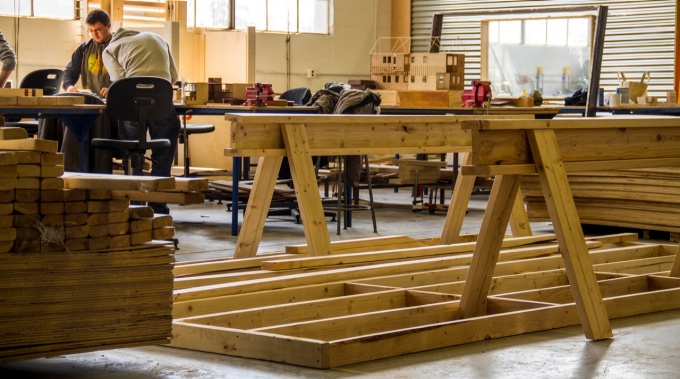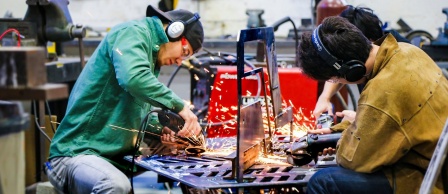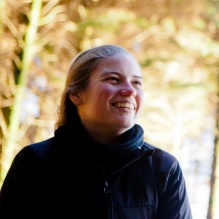Fabrication Workshop
A premier fabrication facility in Western New York that is the hub of our learning-through-making curriculum. Equipped for fabrication of all types, the shop serves both as a space to execute coursework and as a think-tank and maker space for collaborative research with architectural practice and industry.
A full-scale maker space
The Fabrication Workshop is a fully equipped facility occupying 11,000 square feet of space in Parker Hall on UB’s South Campus. Roughly broken into three distinct areas; the Shop for woodworking, metalworking, and assembly, and the digital FabLab, providing versatility to work across multiple scales from model and component building to full-scale prototyping and installations.

Our shop is central to student learning, especially a holistic, integrated approach to design.
- Nicholas Rajkovich, PhD, assistant professor of architecture
Open Hours :
Monday - Thursday 9- 7
Friday 9-5
Saturday - Sunday : Closed (will be open weekends before midterms, finals, and periods of peak demand. See the shop calendar for details)
Closed, Store Open
Tuesday and Thursday 2 - 4
Contact us
Parker Hall
UB South Campus
(716) 829-3510
ap-shop@buffalo.edu
Equipped for any project

Rooted in a culture of making, we are dedicated to providing tools and equipment for material research, model making, and fabrication through analog and digital processes, including CNC routing, laser cutting, 3D printing and a comprehensive selection of power tools. Students can also purchase materials and borrow basic hand tools from our materials store.
We're here to help
Let's problem solve together
Need help with a tool or project? Our staff are here 12 hours a day ready to lend a hand. Experimenting with fabrication processes in your design research? We'll discover new methods and tools together.

Stephanie Cramer
Executive Director of the Fabrication Workshop

Wade Georgi
Manager, Shop Services
What we're making
'Thinking through making' is the pedagogical crux of our programs.
Korydon Smith, professor in the department of architecture
Welded steel cages, CNC routed wooden enclosures and 3D printed ceramic molds are just some of the built works to emerge from our shop.












